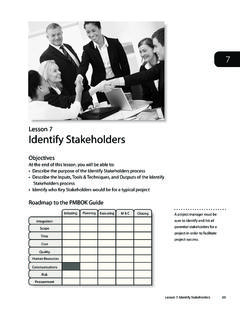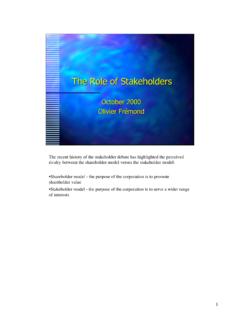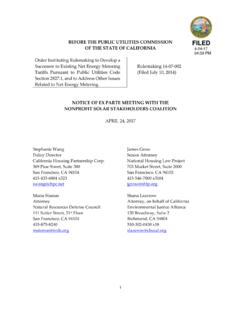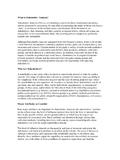Transcription of Stakeholder engagement framework - Department of Health
1 Department of Health Stakeholder engagement framework .. effective Stakeholder engagement is increasingly contributing to organisational resilience and flexibility, to learning and innovation, to the identification of new opportunities, and ultimately to the improvement of sustainable performance. AccountAbility. AA1000SE Stakeholder engagement Practitioner s Perspectives. 2005. Contents Contents .. i Stakeholder engagement and Health .. 1 Purpose of the framework .. 1 Principles for engagement .. 2 Process for engagement .. 3 Inclusive Participation .. 5 Levels of engagement .. 6 What can inhibit effective engagement ? .. 8 Strategies for Success .. 9 References .. 9 Stakeholder engagement and Health Every day, across all of the Department s activities at every level, we engage with people who have a vested interest in what we do and who are, in some way, connected to our purpose. The quality of these relationships with our stakeholders will determine how well we deliver on our vision for better Health and wellbeing for all Australians, now and for future generations.
2 The Department of Health is committed to two-way open communication that involves listening to our stakeholders, keeping them informed and being clear about how their contributions are being used. Having clear expectations keeps the ongoing work understandable, rewarding and focused. This approach is about recognising and understanding the values, beliefs, perceptions and ideas of our stakeholders - not simply just agreeing. Developing relationships that reflect this shared understanding enables differences to be acknowledged and expressed. It provides the basis upon which real dialogue and interaction can occur. Purpose of the framework The Stakeholder engagement framework outlines the models for engagement , our key actions, our capability improvement agenda, our approach to risk oversight and management, and our performance framework , drawing each back to our strategic priorities: better Health outcomes and reduced inequality through greater Stakeholder engagement affordable, accessible, efficient, and high quality Health system through collaborating and partnering with others, and better sport outcomes.
3 The framework sets out a strategic approach to Stakeholder engagement that includes: principles to guide our engagement approach a five step model for conducting engagement activities a matrix to support tailoring the level of engagement to the task, recognising that tools and strategies must be fit-for-purpose, and appropriate to the issues on which we are seeking to engage challenges to consider, and strategies for success. The Stakeholder engagement framework is supported by detailed guidance, tools and templates, together with learning and development and a Stakeholder management system to support staff throughout the Department in planning, designing, undertaking and evaluating Stakeholder engagement activities. Health Stakeholder engagement framework Page 1 Principles for engagement The Department has adopted five key principles to guide Stakeholder engagement activities. The principles set the standards to which we aspire in building consistent, open and respectful working relationships and were agreed to following extensive consultation within the Department .
4 The principles have been tested against and are consistent with current Stakeholder engagement standards and practices across the public and private sectors, locally and internationally. Purposeful We begin every engagement with a clear understanding of what we want to achieve While our engagement will be driven by our strategic priorities, we must be aware of our stakeholders objectives, environment, expertise and level of influence. When we know why we need to engage and we agree on what success looks like, it is easier to conduct focused and meaningful engagement . By planning our communication and managing expectations, we aim to build lasting goodwill with stakeholders participating in the process and develop an understanding about their capacity to engage. Inclusive We identify relevant stakeholders and make it easy for them to engage We identify and enable the participation of those people and organisations who contribute to, influence, or are affected by our work.
5 This includes those that may be harder to reach for reasons such as language, culture, age or mobility. We provide our stakeholders with the information they need to participate in a meaningful way Timely We involve stakeholders from the start and agree on when and how to engage We will clearly identify and explain the engagement process, and negotiate with stakeholders, where possible, as to timelines. This includes meeting schedules, and response times for information requests or feedback. Transparent We are open and honest in our engagement and set clear expectations We will provide information so stakeholders can participate in a meaningful way and will foster a culture of sharing ideas. We will clearly identify and explain the engagement process, the role of stakeholders in the engagement process, and communicate how their input will inform the project. Respectful We acknowledge and respect the expertise, perspective, and needs of stakeholders We understand that engagement is a two-way process.
6 We take care to be open to alternative views and to listen as well as speak. We respect our stakeholders expertise and appreciate the benefits of mutual learning. We recognise the different communication needs and preferences of stakeholders and endeavour to meet these wherever possible. Health Stakeholder engagement framework Page 2 Process for engagement1 The Department s model for Stakeholder engagement has been adapted from the international standard developed by the Institute of Social and Ethical AccountAbility (2005). The five-step process is structured to support thorough planning, preparation, action and evaluation of every engagement activity. The process is a dynamic and ongoing cycle, which supports a comprehensive approach to engagement and will, over time, build an evidence-based platform for continuous improvement. Five step Stakeholder engagement model 1 Adapted from Stakeholder engagement Standard AA1000 SES (Institute of Social and Ethical AccountAbility, 2005)
7 Think Strategically Map stakeholders Identify issues Set strategic objectives Prioritise Analyse & Plan Review progress Learn from others and identify partners Learn about stakeholders Set objectives Resource & Prepare Build internal skills and capability Build stakeholders capacity to engage Design & Engage Identify the most effective engagement approach Design the process Review & Measure Plan follow-up activities Evaluate and report on outcomes Review and learn from the process Health Stakeholder engagement framework Page 3 Think We develop an overall consideration of strategic business objectives, how these relate to stakeholders and specific issues, and how you can undertake an initial prioritisation of stakeholders and issues for further analysis. Plan Introduce different levels of engagement , and guide the analysis of existing relationships, available resources and organisational constraints. It also helps you to learn more about specific Stakeholder s representatives, and to decide on what kind of relationship you want to develop with these stakeholders.
8 Prepare Address questions of internal and external competencies and capacities to engage, and how you can ensure that all parties to an engagement are able to join and take part in it effectively. Engage Address and outline different engagement techniques, and building on the previous steps design an approach that suits the needs of your specific situation and help you to reach your objectives. Evaluate Follow-up on the outputs of engagement , and ensure that your stakeholders feel assured regarding the quality of your efforts. How this process is applied will be driven by the purpose, level and type of engagement undertaken. It is also important to note that the process will operate at the strategic and operational ends of Stakeholder engagement activities and you may be working on more than one step in the process at any time, with different stakeholders, depending on the nature of the engagement . Sections 1-5 of the Department s Introduction to Stakeholder engagement provide details of each step in the process together with tools and templates to support the development of a consistent approach to Stakeholder engagement .
9 Health Stakeholder engagement framework Page 4 Inclusive Participation Inclusion is one of the five Stakeholder engagement Principles that guide our engagement ; we are committed to work with stakeholders who may be harder to reach for reasons such as language, culture, age or mobility. Some of the priority stakeholders for inclusion are: Aboriginal and Torres Strait Islander communities A key success factor will be to expand the capability of all staff to engage effectively with Aboriginal and Torres Strait Islander Australians as they develop and deliver policies and services for Indigenous people and communities. Cultural awareness and appreciation, strong engagement skills for the development policy and programme implementation that meet cultural needs and address the social disadvantage faced by Aboriginal and Torres Strait Islander Australians is important to closing the gap in Health outcomes. Culturally and linguistically diverse communities We recognise that policies and services should be more responsive to the cultural needs of Australians as the population becomes more diverse.
10 There may be a need to develop a cultural diversity plan to address the provision for culturally sensitive services and engagement strategies for communicating with these communities. Enabling those with disabilities to participate in consultation The Department s commitment to supporting people with disability in order to maximise their involvement and potential to participate as equal citizens of the Australian society is underpinned by the National Disability Strategy 2010-2020 and the Department s protocol for engaging with people with disability in developing and successfully delivering the Department s business. Health Stakeholder engagement framework Page 5 Levels of engagement There is no one right Stakeholder engagement method and you may choose a number of methods at different stages of the process. Thinking about and selecting the most appropriate method of Stakeholder engagement and the relevant tools and techniques to facilitate the engagement process can vary according to the situation, time, skills and resources.







